Making Spark & Sparkle (Part 1)
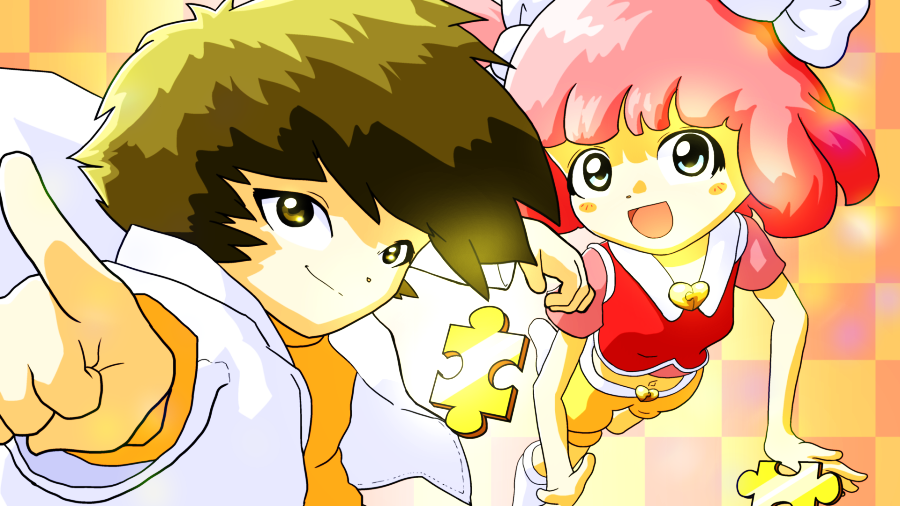
Spark & Sparkle is a 2-player competitive arcade style shooter. It’s meant to feel old and familiar, with a strong retro aesthetic - But with some unconventional gameplay, combining jigsaw puzzles with scrolling shooter mechanics.
I thought I’d write some thoughts about the ideas behind the game, and what it was like to work on it. If you're interested in reading a bit about the game's development, I hope you enjoy!
We’re Essencey, a two-person dev team. I'm JackCheeseJ, I did the art and sound, and my friend, Sam Price, did the programming. We worked together on the design and mechanics of the game.
We started developing Spark & Sparkle in 2016, and released it on Steam in April, 2020. It’s our first game on Steam.
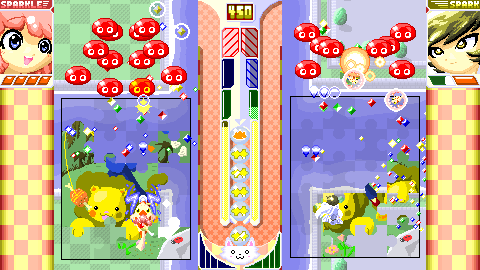
Niche Within Niche
Sam initially suggested that we make something "Like Twinkle Star Sprites," and at the time I didn't know what that was. It's a split-screen, 1-on-1 "shoot 'em up" (or "shmup") arcade game from 1996, in which each player tries to outlast the other against waves of enemies. Many people familiar with that game immediately recognize its influence when they see Spark & Sparkle, and describe it as "Twinkle Star Sprites with puzzles". That's a great description, but there was actually another specific game we took influence from, too: A SNES game called Pieces, (or in Japan, Jigsaw Party).
Pieces is a 1-vs-1 game in which players build jigsaw puzzles, and the screen space is organized in very much the same way as in a split-screen shmup. After looking at Twinkle Star Sprites, it occurred to me that the two styles of gameplay might have room to happen in the same space and time - even if just barely.
We liked the strangeness of the simultaneous puzzle and shooting. We stubbornly wanted to make a game that allowed players to enjoy both:
- Smooth, intuitive gameplay that rewards skill.
- The challenge of the inherent awkwardness of shooting and building puzzles at the same time.
We knew that no matter how elegantly we combined the styles of gameplay into a cohesive experience, the result would be something some people would be either overwhelmed by or just uninterested in - or both. This game was going to be a combination of several niche interests: shmup (competitive 2-player shmup, at that), jigsaw puzzles, a colorful, cutesy art style, along with a retro arcade aesthetic. I think we leaned into the game's weirdness more comfortably knowing that we were designing for that limited audience.

Game Mechanics
Gameplay is basically: “Enemies drop gems, gems earn puzzle pieces.”
I think the simple, straightforward presentation of an arcade-game style was a good reference to keep in mind as we figured out how things should work. By combining jigsaw, shmup, and 1v1 competitive gameplay, Spark & Sparkle has a lot of different mechanics and actions all happening at the same time. However, we wanted to make sure that, like in an arcade game, matches could easily have forward momentum, even for players who don’t yet understand how all the mechanics work.
Once you know how to attack, it’s likely you’ll start shooting enemies just because they’re on the screen - And the gems are collected automatically once your character moves close to them. So as long as you’re defeating enemies, it’s basically impossible to avoid earning puzzle pieces. At that point, a new player will hopefully be comfortable to just keep doing what they’re doing, understanding the mechanics better as they go.
Characters
When you first start, only 3 characters are playable: Spark, Sparkle, and Toast. We tried to give them mechanics that differ from each other widely, while still being fairly normal, familiar shmup playstyles that don’t take much time to figure out and use effectively.
There are 5 more characters you can unlock by playing the game’s “Arcade Mode”. With those characters, we tried to span a much wider range of playstyles, with more drastic tradeoffs in strengths and weaknesses.
Each character also has a unique special attack that expends an energy meter, and is recharged as you defeat enemies and build the puzzle. That let us give some of the characters even more unusual and specialized primary attacks, with secondary attacks that helped round out their abilities.
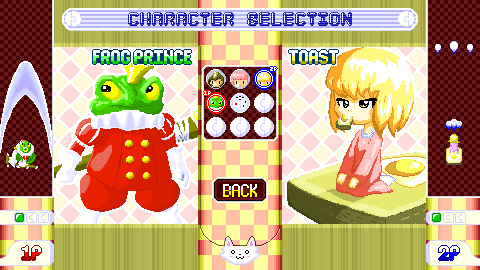
Puzzle Mechanics
We wanted to design mechanics so that the shooting and puzzle actions would compliment each other, but to do it in such a way that one activity didn’t compromise the other’s inherent feel.
We especially wanted the puzzle to have a natural, simple feel to it. At first, the game didn’t have any acknowledgement when you put pieces in the right spot; It just let you figure out where everything went on your own, and once the puzzle was assembled, it would call the victory. We even thought it might be fun to let players win by assembling their puzzle upside-down, if they wanted to.
If the game didn’t offer any help or obvious reason to assemble the puzzle over the course of the match, however, we thought inexperienced players wouldn’t be likely to bother doing it. If you’re not sure where any pieces go, it’s easy to just settle into a pattern of keeping enemies at bay and grabbing gems, letting the board fill up with the pieces disorganized. That can make for a really stressful and discouraging end of the match, where you’re trying to make sense of a scrambled picture while enemies keep bombarding you.
Eventually we decided to change the game so that it gave feedback right away when a piece was placed correctly. Correct pieces lock in place, grant a moment of invincibility, attack enemies, create gems, send obstacles to your opponent, and also charge up your special attack meter.
That’s a lot of things to tie into one mechanic, but it felt right for the puzzle to be so beneficial and integral to match progress. It feels kind of like “running the table” in billiards, or stringing combos together in a fighting game - Spark & Sparkle lets players build, and fight, a lot more effectively if they are able to assemble the puzzle correctly.
I hope some people enjoy getting really proficient with building some of the puzzles, and see what the game is like at a high level of play. If you know where to put most of a puzzle’s pieces, matches can take on a really fun momentum.
Gems, Bubbles, Capsules, and Pieces
The game changed a lot throughout development, as games tend to do. We adjusted a lot of things and discarded a lot of ideas, too. We’d often get gameplay mechanics just kind of working, then figure out how to get them working together.
The puzzle might have been the main priority, but we wanted the puzzle and shooting activities to both be necessary, and integrated with the other. They’d inevitably complicate one another, that was part of the idea, but we wanted to make sure neither ever felt like it was purely an inconvenience.
We made it so puzzle pieces showed up once a set number of enemies had been defeated, so you needed to fight in order to build the puzzle. We also added the shockwave effect that damages enemies when you correctly place pieces. That way the puzzle fed back into the fighting mechanics, too. We also implemented the mechanic - pretty early in development, I think - of losing a piece and giving it to your opponent, should you get hit by enemies or hazards.
One way we implemented special moves was for defeated enemies to drop "energy" that you could collect to charge up your special move’s meter.
Later, we swapped the functionality around, so that defeating enemies will passively fill the special gauge (which has a more natural feel to it anyway), while the more obvious, visible resource, dropped by enemies, is related directly to your main priority - the puzzle. That became the gems in the final game.
We eventually came up with (although I don’t remember exactly how) the idea of puzzle pieces coming in capsules, stacked in the center of the screen, like they’re in a vending machine. Some contain items that pop out along with the puzzle piece, others contain enemies that need to be defeated before the piece can be collected.
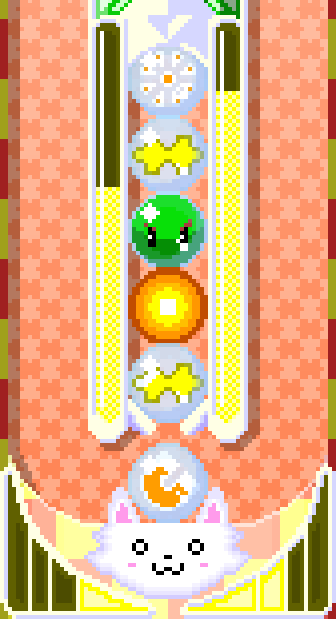
Collecting gems fills up a bar next to the stack of capsules, and when the bar is full, you get the next capsule in line. Making the capsule mechanic reliant on the gems meant that we could add some variation to enemy value, so that stronger enemies give more (or bigger) gems. It also meant that players could directly see and control when they earn capsules. Once we had that system in place, with the upcoming capsules visible, we knew we wanted to let players use it to strategize a bit, too.
If you’re about to get a capsule, but you see that the next one contains an enemy you’d rather not deal with - you can avoid gems for a moment or two, let your opponent get the less desirable capsule, then get one with a helpful powerup instead.
Earning a puzzle piece - Or rather, now, a capsule with a piece inside - causes the mechanism in the center of the screen to launch a capsule into your area of play, where it bounces around like a pinball until it takes enough damage and opens. We thought the action of the capsules bouncing around was a fun, interesting addition, since they can be a big help by damaging enemies, but can also pose an inconvenience if they bump into the player.
I think it was fairly late when we added the “gem bubbles”. We wanted to increase the number of gems players could get if they had good situational awareness and screen control - But we wanted to avoid crowding the screen with even more enemies. At first, we thought of having some enemies that belong to “gallery formations,” groups that stayed near the top of the screen, but didn’t encroach on the player’s area. Eventually, though, we decided a totally different kind of target would be better. Bubbles break instead of damaging the player, if they collide with them, and they only take a single attack to break. They’re also timed independently from enemy formations, if I remember correctly - So depending on when they appear, they can create risk-reward situations in a variety of unpredictable ways.
Special attacks function similar to the classic “bomb” ability a lot of old shmups have. They grant a moment of invincibility, and while they can serve as a fallback to avoid damage, proactively using special attacks at the right time can also let players attack more enemies, get more gems, or make important maneuvers to make fast progress more efficiently than otherwise possible.
Balance and Pacing
Even when playtesters understood both the shooting and puzzle activities, they still found switching between them to be extremely awkward, repeatedly taking damage from enemies while trying to focus on the puzzle.
We tried to find a pace for the enemy waves that we felt was sensible for both new and experienced players, with the difficulty levels providing variations on that pace. We wanted the game to introduce enemies and items at a logical pace, whether you were taking out enemies out as soon as they appeared, or just barely keeping up.
Even while some aspects of the game have a steep learning curve, some players felt the game's early stages moved too slowly. The initial settings were meant to keep players from being overwhelmed by too many pieces at once, but it seemed to be adding extra time in moments players didn’t actually need it. A few months after launch, we updated the game to reduce the number of gems required to earn each capsule, and help matches move at a more constant pace.
Player 1 Fighting Monsters vs. Player 2 Fighting Monsters
Balancing the game took a lot of experimentation, addressing both the enemies that players’ engage directly, as well as the fact that each match is a competition between players.
The game usually feels best when both players’ skill levels are similar, which I think is pretty much the case for the vast majority of competitive games.
Many arcade-style "vs" puzzle games end their round when a player reaches a fail state - the "goal" being to simply stay in play. If players are meant to clear blocks out of their play area, for example, the game is over when one player’s area is full, and the other player wins.
In a fighting game, effectively attacking your opponent renders them unable to perform their own attacks. This means the chance to turn a fight around exists almost constantly. If you can block and attack, then you can prevent your opponent from hitting you, and you still have a chance to win.
I really enjoy when that aspect is present in games - The ability to make a comeback - no matter how close you are to losing - just by playing effectively. Spark & Sparkle operates more like a racing game, though, where players don’t directly impede one another by making their own progress.
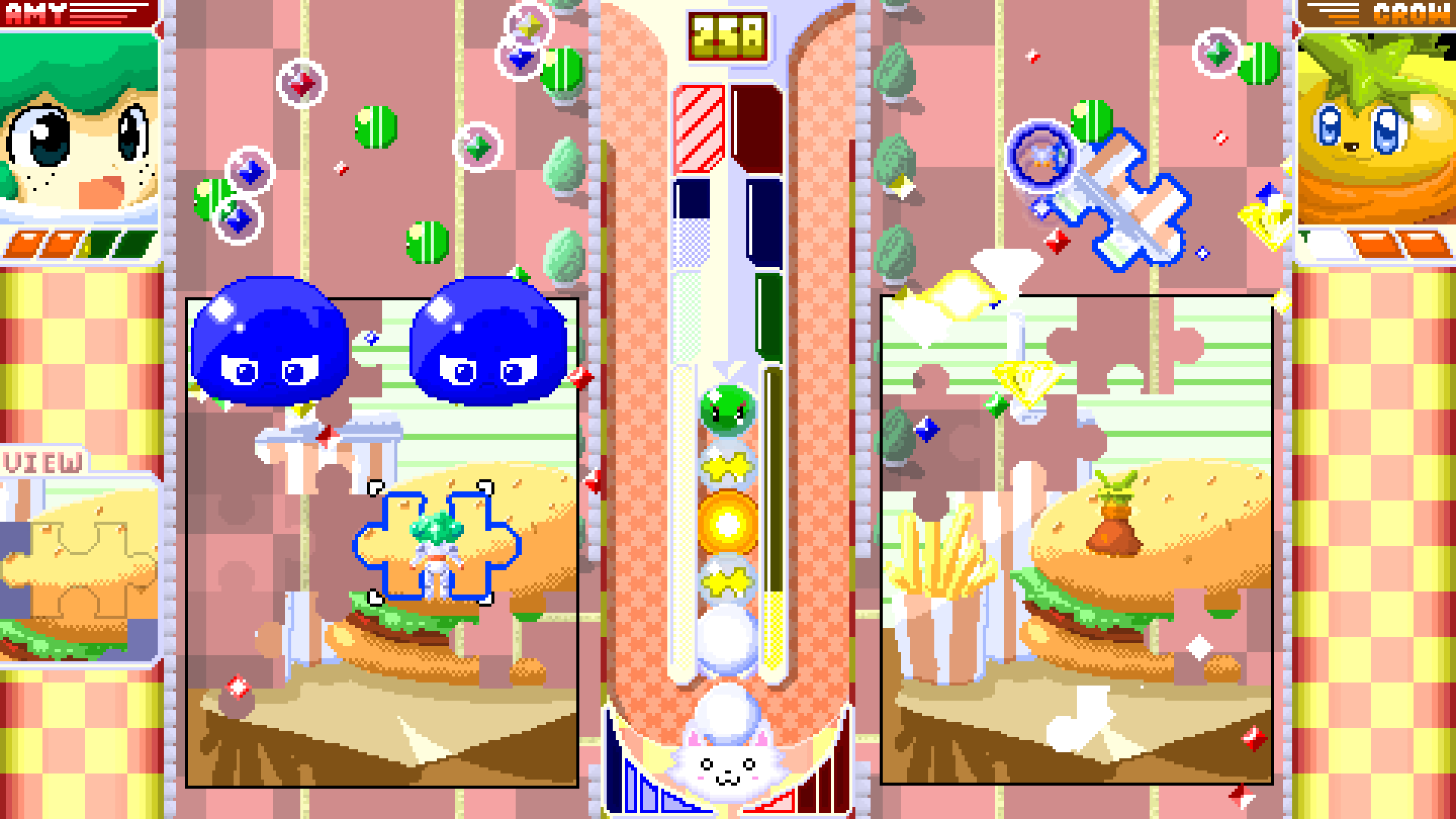
Because of that, a more experienced player can get a lead that can be difficult for a less experienced player to make up. We had a lot of difficulty deciding how to deal with that issue.
Building dynamic behavior into the game to help a player catch up (a “rubber band” mechanic) seemed like it would trivialize skilled players’ effort. Random elements might offer a chance to catch up, but too much randomness also risks trivializing skill - It also might benefit the player who was already in the lead. The more skill-based we made the game, the more easily matches could become one-sided.
I hope the game has successfully balanced competitive, skill-rewarding mechanics, with ones that keep things unpredictable in a fun way.
The game has a bit of randomness in the form of the items and hazards included in the capsules, while allowing players the ability to compete for the ones they want.
Additionally, the number of gems required to earn capsules is increased for every five puzzle pieces placed on the board, allowing a player who’s far behind to earn pieces more quickly. This mechanic actually resulted in an additional strategy players can use:
By waiting to place a fifth piece down, it’s possible to earn extra capsules before the gem cost goes up. Additional techniques can optimize this trick even further, like leaving capsules in play longer, and keeping uncollected pieces in play by shooting them. (After emerging from capsules, pieces naturally drift off the bottom of the screen if you don’t pick them up, and only one piece can be held at a time. Shooting pieces stops them falling for a moment.)
Kind of like animation canceling in Street Fighter II, this wasn’t a technique we intentionally designed, but it was really exciting to see the extra depth it added to the game, once we realized it was possible.
Puzzles and Costumes
Like many people, I spent a significant part of my early childhood playing a few games extensively, enjoying playing just for its own sake. If I'd essentially done everything in a game, though, I'd usually start wishing that it had some way to acknowledge whatever small, odd accomplishments I could imagine I was making as I explored the game’s possibilities. Doing something a certain number of times, or doing something in an unusual way, etc. I also never wanted to give up on finding new secrets, of course. I think it's fun maintaining that hope of finding just one more hidden thing, or the presence of an unlockable character or item that you just haven't figured out how to get, yet. I feel like games don't usually have that kind of mystique anymore, and I wanted to make something to offer that kind of experience again.
For anyone who wants to keep playing just for the enjoyment of it, even after seeing all the game's basics, I hope Spark & Sparkle continues to feel engaging and rewarding to play. I hope the puzzles, costumes, and characters help the game to retain some mystery and adventure for a while.
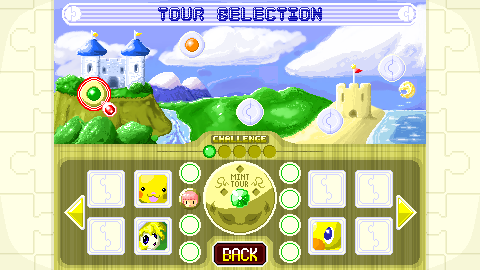
Thank you very much for reading, I hope it's been interesting so far! That's more than enough for now, though, I imagine.
More on Spark & Sparkle’s development to come in Part 2 - In the next part, I'll talk about the game's graphics, art direction, and a bit about the music, too.
Here are some links in case you’re interested in checking out Spark & Sparkle, or something related:


